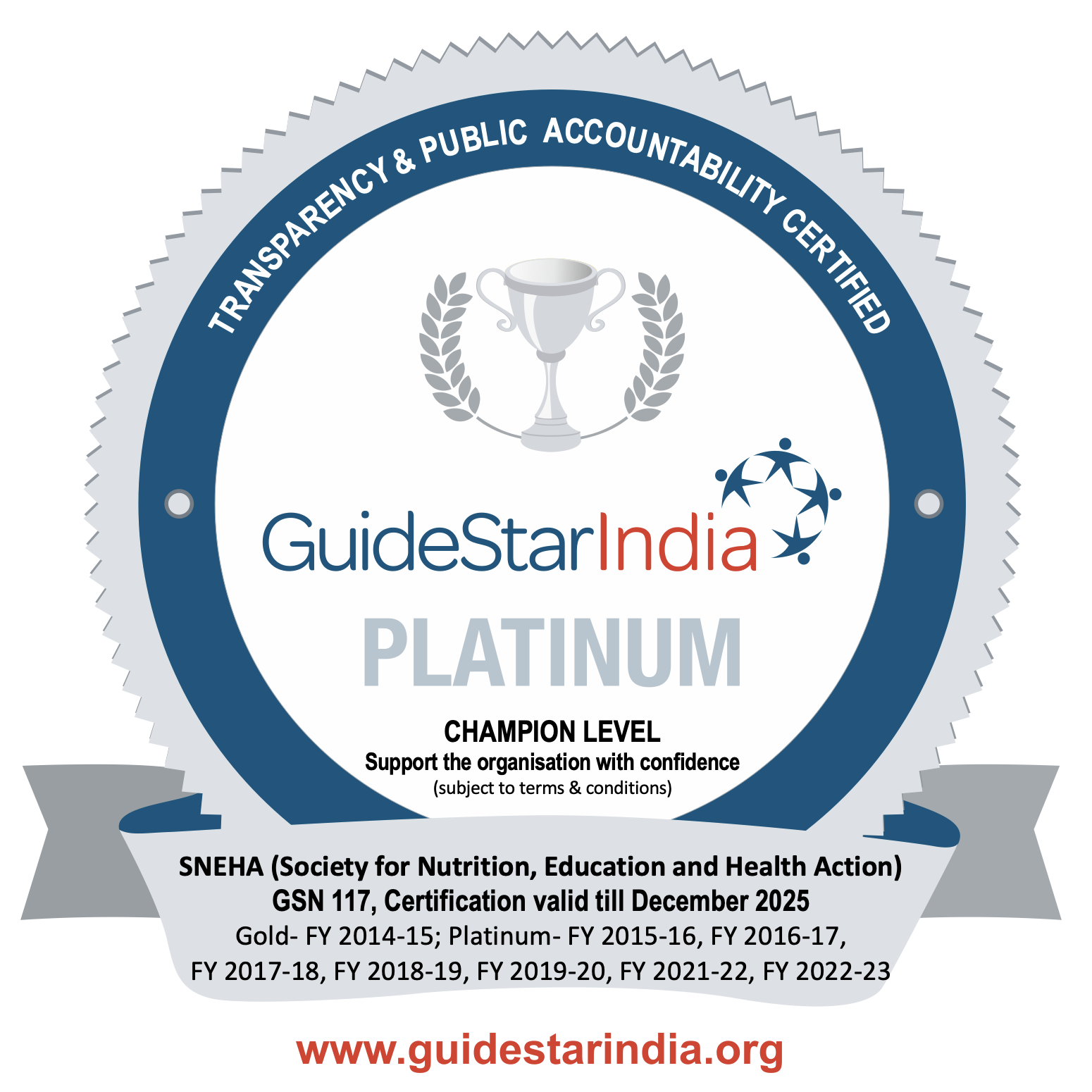Tackling child malnutrition the Aahar way
Aug 2 2024 / Posted in Child nutrition
A few months short of his first birthday, Sushma’s firstborn died. Underweight at birth, Vicky was always sickly and suffered from frequent diarrhoea.
A ragpicker, Sushma lives in Govandi, home to one of Mumbai’s largest slum colonies and an area that reports a large number of malnutrition-related deaths.
According to a recent study, 6000 children die everyday in India and nearly half of them are malnutrition-linked. Mumbai alone reports 26000 deaths every year.
“The maximum deaths due to malnutrition take place between six months and two years”, says Dr Armida Fernandez, founder-trustee, SNEHA, the Society for Nutrition, Education and Health Action, a Mumbai-based non-profit which seeks to address the needs of women and children in urban, underprivileged communities by working with the public health system. “The problem is that the ICDS program takes on children after they turn three years old and by then the damage is done”.
ICDS or the Integrated Child Development Scheme is a government welfare program that provides food and health facilities to children below the age of 6 as well as their mothers.
The problem, experts say, starts at a very early stage.
“Girls are often treated as less valuable and their health and nutrition is accorded low priority,” says Shreya Manjrekar, a program coordinator with SNEHA. “When she gets pregnant, her poor nutrition level affects the baby.”
Early marriage and high teenage pregnancy rates add to the problem. And compounding it is the lack of awareness about exclusive breastfeeding and nutritious diet.
Exclusive breastfeeding for six months after birth is widely established as an effective way to reduce malnutrition and ensure that every child has a fighting start in life.
Not only does early and exclusive breastfeeding help children survive, it also supports healthy brain development, improves cognitive performance and is associated with better educational achievement at age 5. Breastfeeding is the foundation of good nutrition and protects children against disease. In this and many other fundamental ways, breastfeeding allows all children to thrive and develop to their full potential.
Breastfeeding also contributes to maternal health because it helps reduce the risk of post-partum haemorrhage after delivery. In the short term, it delays the return to fertility and in the long term, it reduces type 2 diabetes and breast, uterine and ovarian cancer.
Yet myths and misinformation regarding breastfeeding are plenty.
“I did not nurse my children but fed them cow’s milk because that is better for health. I told my daughter-in-law to do the same” says Alka, Sushma’s mother-in-law.
Her neighbor Usha adds, “I started nursing my daughter three days after she was born because the first milk is dirty and it should be thrown out”. She has never been told that the first milk or colostrum contains antibodies that are essential to build immunity.
The impact of this lack of awareness finds reflection in India’s infant mortality rate. At 1.34 million under-five deaths, India reports the highest IMR according to a 2014 UN report. Many of these deaths can be prevented with breastfeeding.
“A major problem we see is that of stunting”, says Dr Fernandez. “Babies in India are getting shorter”. This too is attributed to under-nutrition in the first 1,000 days of a baby’s life, including during gestation.
To bust such myths and promote nutrition in this crucial 1000 days period, SNEHA holds yearly camps called Aahar in areas that are home to a large number of informal settlements or slums.
One in six of Mumbai’s population lives in slums, and many of them live under the threat of constant displacement. Like Sushma, they have no fixed means of income and often travel long distances for work. In such a scenario, food takes the lowest priority.
By using innovative strategies and tools like flash cards, puzzles, games and videos SNEHA counselors work with the ICDS staff to promote awareness about breastfeeding techniques, complementary feeding, and healthy cooking practices.
Apart from this, SNEHA also holds workshops and sessions where they directly engage with the communities. “We do this through home visits and group meetings where we demonstrate healthy methods of cooking”, adds Manjrekar.
“We reach out to not just mothers, but all the women in the community because the decision on what to feed is not entirely in the mother’s hands. The in-laws play a big role”, says Anagha Waigankar, associate program director, Aahar. “We also educate the mothers about immunization, hygiene and care during illness because if the women change their habits about cooking and child care, it benefits the entire family.”
An internal impact assessment report by SNEHA shows a 35% reduction in wasting through 2 ½ years of intervention.
India’s urban population is estimated to double to over 800 million over the next five years. A quarter of them, nearly 200 million, will live in poverty, in slums like Govandi.
The solution to tackling child malnutrition lies in models like Aahar that can be scaled up to tackle a critical public health issue that has direct economic implications on India’s national growth.
Also read: Promoting breastfeeding | SNEHA
Share:














